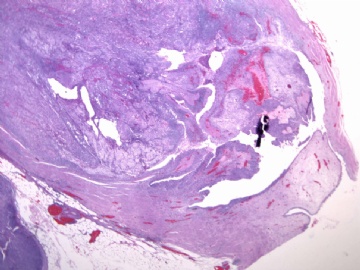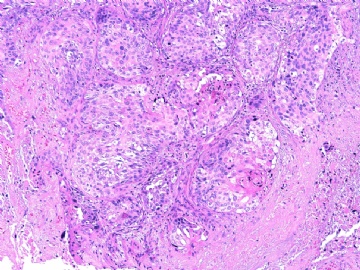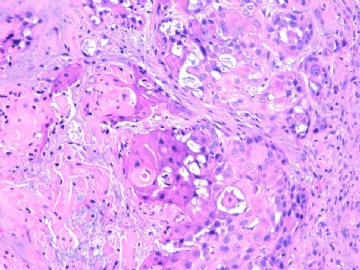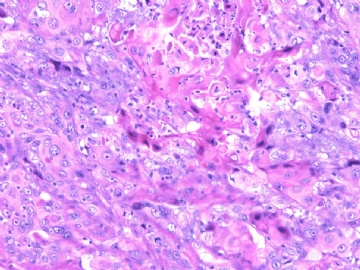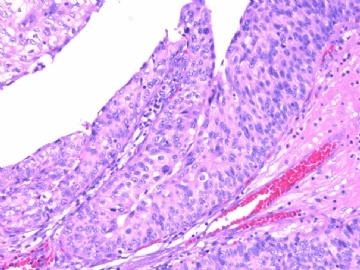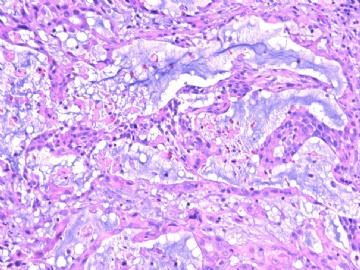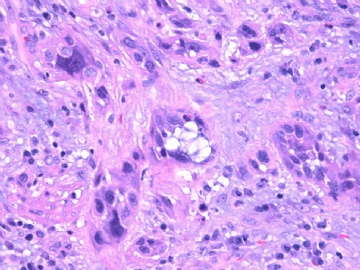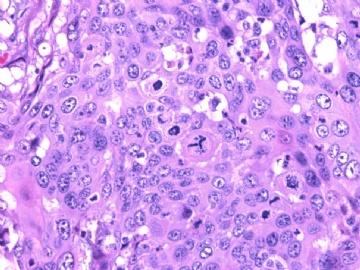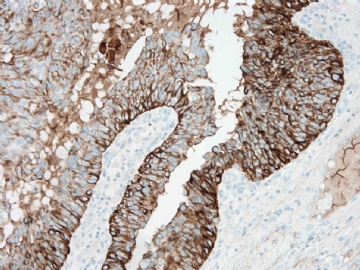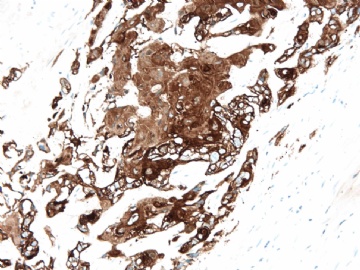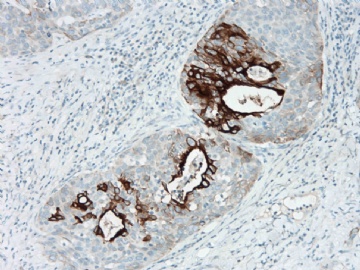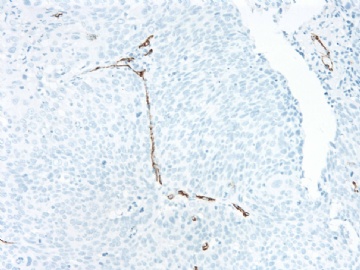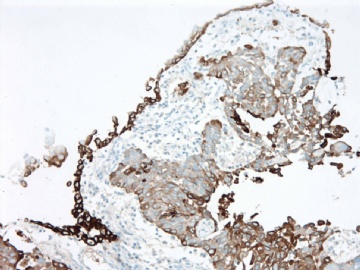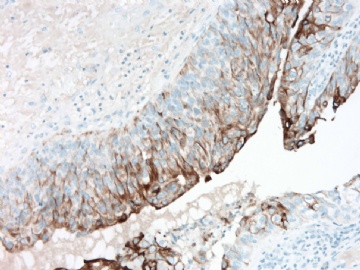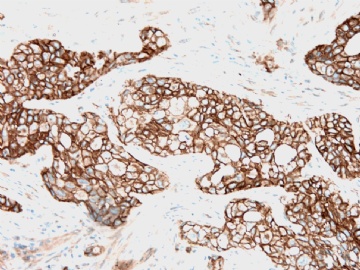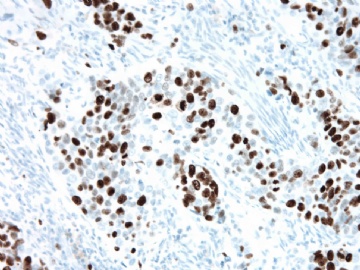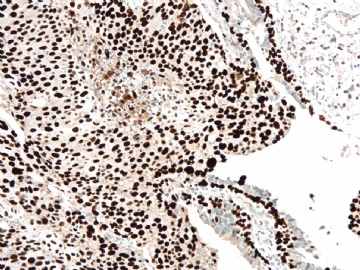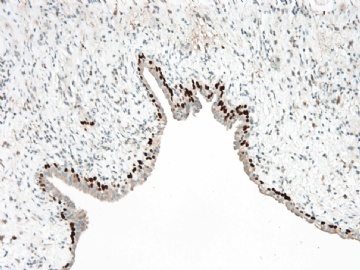| 图片: | |
|---|---|
| 名称: | |
| 描述: | |
- 男/55岁 体检发现输尿管占位(IHC标记10-9-14)
-
本帖最后由 于 2010-09-16 07:39:00 编辑
请看目前主要外科病理诊断参考书中对“尿路上皮鳞状细胞癌”的定义。
1、[WHO 2004] Squamous cell carcinoma is defined as a malignant neoplasm derived from the urothelium that shows a pure squamous cell phenotype. When urothelial elements (including urothelial carcinoma in situ) are present the tumor should be classified as urothelial carcinoma with squamous differentiation.
2、[Morden Surgical Pathology 2nd edition,2010]. Pathology Squamous cell carcinomas should be distinguished from typical urothelial carcinomas with squamous differentiation, which can be seen in a substantial proportion of urothelial carcinomas. When areas of squamous differentiation are seen, the urothelial carcinoma is considered high grade. If an identifiable urothelial element is seen, in particular urothelial CIS, or if a history of CIS in the upper or lower urinary tracts is obtained, the tumor should be classified as a urothelial carcinoma with squamous differentiation. The finding of squamous metaplasia and dysplasia in a patient with a history of bladder irritation favors a diagnosis of squamous cell carcinoma .
3、[AFIP新版-299页 ] Squamous cell carcinomas are a group of bladder neoplasms with histologic pattern and cytologic features reminiscent of similar neoplasms of the epidermis.…….
The distinction between urothelial carcinoma with squamous differentiation and squamous carcinoma is somewhat arbitrary, with most authorities requiring that a squamous cell carcinoma be composed of at least 80% squamous element.
4、[SDSP 第5版2010 -1850页] Squamous cell carcinoma should be reserved for those tumors that are predominantly keratin-forming.
诊断尿路上皮鳞状细胞癌主要有二种观点:
1)肿瘤中只要存在尿路上皮癌成分, 无论其多少、无论原位还是浸润,(包括以前有尿路上皮癌病史或尿路上游部位有尿路上皮癌),一概诊断为“尿路上皮癌伴鳞状分化”;
2)肿瘤中鳞状细胞癌成分达80% ,就可诊断为鳞状细胞癌。

- xljin8

